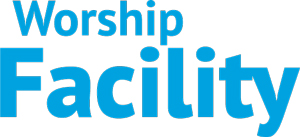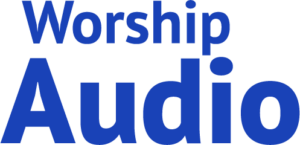If you’ve read my content, you know I’m a huge advocate for teamwork. No one on a worship team works in a vacuum. Everything affects everything. Your tone, your volume, your mic technique, even your personal mixer choices, affect the rest of the team, the audio engineer, and ultimately, the congregation’s experience.
I’ve covered these dynamics in several past articles:
What Audio Engineers Need Singers to Understand,
What Audio Engineers Need Drummers to Understand,
What Audio Engineers Need Bass Players to Understand,
and even one for teaching pastors: Hey Pastors, Can You Help Us Out?
Since releasing that series, I’ve been asked to write one for electric guitarists. I decided to take a slightly different approach with this one.
I was fortunate enough to get access to one of the most highly rated lead guitarists in the worship world: Dennis Jae D’Agostino. Dennis or DJD, as most people know him, was kind enough to let me sit in on a rehearsal and share his insights as one of, if not the, preeminent lead guitarists working in churches today.
Please enjoy:
What Lead Guitarists Need Audio Engineers to Understand

Me: Dennis, thank you for your time today. It’s an honor to meet you and chat. I noticed your pedalboard is one of the biggest I’ve seen. How many pedals do you have?
DJD: I’ve scaled back a bit over the years, this is my small rig. About 21 pedals.
Me: Wow. How do you manage the system noise they generate?
DJD: Actually, they don’t generate any noise. The hiss and 60-cycle hum you’re hearing at FOH is in the PA system. They need to get that fixed. It’s a common problem in churches today, even in some of the largest, most sophisticated systems, they can’t seem to eliminate it. Occasionally, some young, inexperienced audio engineer will try and convince me it’s in my rig. But it’s not.
Me: I noticed you’re running signal to an amp in an isolation room and a stereo direct line out. What’s going on in the amp compared to the direct out?
DJD: I like to keep things pretty simple. I think we’re doing four songs on Sunday. No need to overcomplicate the system. There are actually three amps—one mono dry, and the other two are the left and right stereo wet effects.
Me: So three mics on the amps, left, right, and center, and a stereo direct out from your pedal board?
DJD: No, six mics. Don’t forget the ones on the rear of the cabs. For texture.
Me: Considering the four songs you’re prepping for Sunday, are eight channels dedicated to the lead guitar workable for your audio engineer? I mean, does he have time to combine them properly into a coherent guitar sound?
DJD: That’s why I scaled back from twelve channels. It’s not all about me, ya know. And besides, he doesn’t need to do much. My tone is pretty spot-on. All he really needs to do is turn it up.
Me: During the rehearsal, your monitor guy cued up your sounds for me to hear. I think the two channels of direct stereo lines from your pedal board sounded great, even without the six mic’d cabs. Is there ever a scenario when you just use those?
DJD: I guess if the three amps blew. But I actually have back-up amps. So…no.
Me: Do you use a basic setting for the day, or does it change based on the song?
DJD: Usually I have five or six sounds programmed for each song, so lots of changes in every song, between verses, intros, pre-chorus, pre-pre choruses, bridge, solos, and of course, ethereal-between-song swells.
Me: Do you maintain a consistent level when changing between the sounds?
DJD: Not really, but I would guess the levels probably never fluctuate more than 10 to 15 dB.
Me: Does your engineer ever make suggestions on how your sounds are working?
DJD: He knows better than to do that.
Me: Thanks for letting me listen in on your IEM mix during rehearsal. I noticed there’s not much of anything in the mix other than your guitar. Actually, I’m not even sure I heard the click. Is that how you always do it? And do you feel like not having the other members of the team, specifically the other guitarist in your mix, makes it more difficult to blend cohesively with the rest of the band?
DJD: Wait, there’s another guitarist this week? Hmm. Well, I suppose that’s why it’s called a personal mix, isn’t it?
Me: Do you ever walk out into the auditorium to hear how your tone is translating in the PA?
DJD: Would you ask a drummer to do that?
Me: Well, that’s sort of… never mind.
Me: Final question. Since most of my readers are audio engineers, any thoughts on how they can improve their skills for working on lead guitars?
DJD: As my friend Rick always says, “It’s not about you, bro.”
Well, there you have it, What Lead Guitarists Need Audio Engineers to Understand.
Just make sure you’ve got six mics, three amps, two DI lines, and zero opinions.
And if you’re still somehow trying to make it all work…don’t forget to listen.


